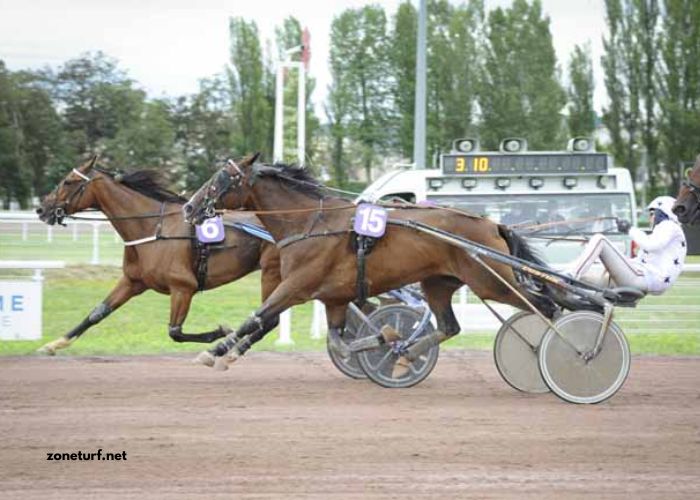In the ever-evolving landscape of technology, quantum computing stands as one of the most revolutionary and promising fields. It promises to unleash computational power that has the potential to disrupt industries, transform scientific research, and solve problems that were once thought to be insurmountable. At the heart of quantum computing lies the concept of qubits, the quantum analog of classical bits, which brings with it a new realm of possibilities. In this article, we will explore the fascinating world of quantum computing, delve into the enigmatic qubits, and understand how they are poised to revolutionize problem-solving across various domains.
The Classical vs. Quantum Computing Paradigm
Before diving into the intricacies of quantum computing, let’s grasp the fundamental differences between classical and quantum computing. Classical computers, the ones we use in our daily lives, rely on bits to process and store information. A bit can either be in a state of 0 or 1, representing binary logic. Classical computers perform operations by manipulating these bits, following a linear sequence of instructions.
Quantum computing, on the other hand, harnesses the strange and fascinating principles of quantum mechanics. Instead of bits, quantum computers use qubits. Qubits, thanks to their quantum nature, can exist in a superposition of states. This means that they can be in a state of 0, 1, or any combination of both simultaneously. This property enables quantum computers to process a vast amount of information in parallel, making them exponentially more powerful for specific tasks.
The second essential property of qubits is entanglement. When qubits are entangled, the state of one qubit instantaneously affects the state of another, even if they are separated by vast distances. This phenomenon is what Albert Einstein famously referred to as “spooky action at a distance.” Entanglement enables quantum computers to perform complex operations and solve intricate problems that are practically impossible for classical computers to tackle in a reasonable time frame.
Quantum Bits (Qubits) – The Building Blocks
To fully comprehend the potential of quantum computing, one must delve into the world of qubits. These quantum counterparts of classical bits are the heart and soul of quantum computation.
Superposition: The Power of Being Everywhere at Once
The most distinctive feature of qubits is superposition. In classical computing, a bit is either 0 or 1, and it can only represent one of these states at any given time. In contrast, a qubit can exist in a linear combination of 0 and 1. This means that it can be both 0 and 1 simultaneously, or any combination of these states, thanks to the principles of quantum mechanics.
Imagine a qubit as a spinning coin in mid-air. In classical terms, the coin is either heads (0) or tails (1) when it lands. But in the quantum world, while it’s still spinning, it’s both heads and tails at the same time. This property allows quantum computers to perform multiple calculations in parallel, drastically speeding up problem-solving for certain tasks.
Entanglement: The Cosmic Connection
Entanglement is another mind-boggling concept in quantum computing. When qubits are entangled, the state of one qubit becomes dependent on the state of another, regardless of the distance separating them. This seemingly instantaneous connection between entangled qubits defies classical intuitions.
To understand entanglement better, consider two entangled qubits as a pair of gloves. If you separate these gloves and send one to the opposite end of the universe, you instantly know the state of the glove you have. If it’s a left glove, the other one, no matter how far away, is a right glove. This property of entanglement enables quantum computers to perform operations and make calculations that are far beyond the capabilities of classical computers.
Measurement: Collapsing the Superposition
In quantum computing, the act of measurement plays a pivotal role. When you measure the state of a qubit, it “collapses” from its superposition of states into one of the classical states, 0 or 1. This may seem counterintuitive, given the previous discussion about superposition. However, it’s a fundamental aspect of quantum mechanics.
Imagine you have that spinning coin (qubit) again. While it’s in the air (in superposition), you don’t know if it’s heads or tails. But the moment it lands (you measure it), it becomes either heads or tails, with probabilities determined by its superposition. This measurement process is essential in obtaining the output of quantum computations.
Quantum Computing in Action
Now that we have a grasp of qubits and their peculiar properties, let’s explore how quantum computing is being put into action and how it promises to revolutionize various fields.
Cryptography: Cracking the Unbreakable Codes
One of the most intriguing applications of quantum computing is in the realm of cryptography. Classical computers rely on complex algorithms to encrypt sensitive data, making it nearly impossible for adversaries to crack the code within a reasonable time frame. However, quantum computers have the potential to break widely-used encryption methods, such as RSA and ECC (Elliptic Curve Cryptography), with their exceptional processing power.
Quantum computers can efficiently solve the problem of integer factorization, which forms the basis of RSA encryption. In classical computing, it would take an impractical amount of time to factor a large integer into its prime components. Quantum computers, specifically those running Shor’s algorithm, can accomplish this exponentially faster. This means that the encryption methods protecting sensitive information, including financial transactions and secure communications, could become obsolete in the face of quantum computing.
Consequently, the development of quantum-resistant encryption methods, also known as post-quantum cryptography, has become an urgent priority. Researchers are working tirelessly to create encryption techniques that can withstand the computational prowess of quantum computers, ensuring the security of digital information in a post-quantum world.
Optimization: Solving Complex Problems in Real Time
Quantum computing shines in the realm of optimization problems. These are real-world challenges where finding the best solution from a vast number of possibilities is a formidable task. Classical computers often struggle with optimization problems because they have to explore each possibility sequentially, a process that becomes infeasible for complex scenarios.
Quantum computers, with their ability to explore multiple possibilities simultaneously through superposition, excel at solving optimization problems. For instance, they can optimize supply chains to minimize costs, find the most efficient routes for logistics, or optimize drug discovery by simulating molecular interactions. These are tasks where quantum computing can provide real-time solutions that significantly enhance efficiency and cost-effectiveness.
Simulation: Unraveling the Mysteries of Quantum Mechanics
Ironically, one of the most promising applications of quantum computing lies in simulating quantum systems themselves. Quantum mechanics, the foundation of quantum computing, is known for its mind-bending complexity. Understanding and simulating quantum systems at a molecular or atomic level has been a monumental challenge for classical computers.
Quantum computers, however, are inherently suited for this task. They can simulate quantum systems accurately and efficiently. This opens up new avenues for scientific research, especially in fields like materials science, drug discovery, and quantum chemistry. Researchers can explore the behavior of molecules, design new materials with specific properties, and develop drugs with greater precision and speed, all thanks to the computational power of quantum simulation



